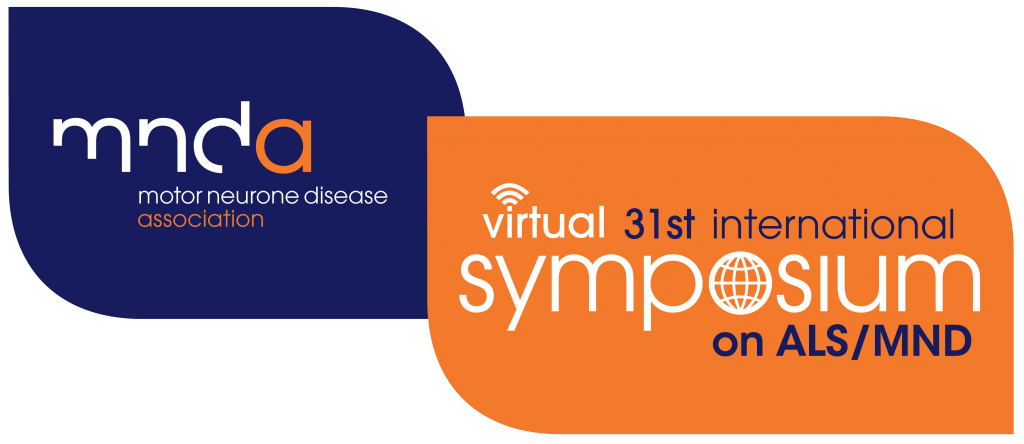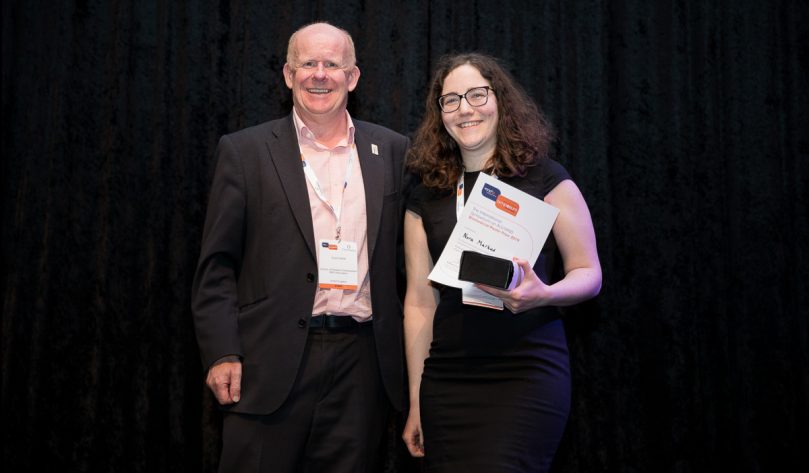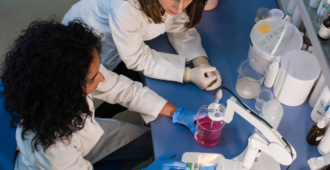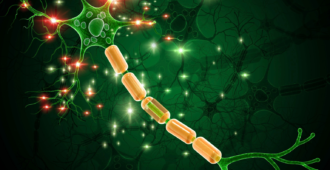This blog is part of the ‘Virtual Highlights’ collection of articles, where you can read about the content of some of the talks and posters presented at the Virtual 31st International Symposium on ALS/MND. Guest researcher blog post written by Nora Markus, 2019 Symposium Biomedical Poster Prize winner.
About me
My name is Nora Markus, and I am a post-doctoral researcher at the Sheffield Institute for Translational Neuroscience (SITraN). I am currently working on a research project in the laboratories of Dr Laura Ferraiuolo and Dr Richard Mead, in collaboration with an artificial intelligence company, who utilises AI to find potential new drugs for the treatment of ALS.
My research
In Dr Ferraiuolo’s group, we use skin cells donated by patients and convert them to different types of brain cells, including a type called astrocytes. Astrocytes are important for the health of the nervous system and are known to become toxic in ALS. Our lab group is interested in understanding why and how this happens, and what we can potentially do to correct this toxicity. In my project, I use these patient astrocytes together with healthy motor neurons and examine the cell death caused. I test various drugs on these cells to see whether they are able to provide a rescue. We then take the drugs which have shown a positive effect and try to further understand how they protect the neurons against the toxicity from astrocytes, and whether we think these drugs may be useful in the clinic.
Working through the lockdowns
I believe this year has been unusual for all of us around the world. In the UK, during the first Covid-19 lockdown in March 2020, we had to work from home for a few months. This is very unusual for someone who usually spends most of their time in the laboratory. However, lockdown provided an opportunity for us to stop and analyse our data, finish writing up papers for publication and come up with fresh ideas for our research once we could resume our experiments. At SITraN we started to return to the lab in July, adapting to a shift pattern of working, so that we could adhere to social distancing, and wearing masks to protect each other. Taking these precautions, we have been able to start producing new data and progress our projects once more. Luckily, this has also meant that we could stay open and continue our research during the second lockdown in the UK.
The pandemic has not only meant changes to working in labs, but also in the way we communicate our data to other scientists, as well as to patients. Many conferences have moved online this year, due to restrictions on travel and large gatherings, as well as the need for social distancing around the world. Although not being able to interact face-to-face with others in the field has been challenging, moving conferences online has had its own benefits. I attended a conference on Glia in Health and Disease during the summer, as the astrocytes we study in our lab are a type of glial cell (non-neuronal cells in the brain). I am very interested in glia and their role in disease, so this was a great opportunity to hear about high quality research. As the conference was based in the US, but took place virtually, it allowed me and others to attend the conference from anywhere in the world, without the need to travel to the US.
My virtual symposium experience

The 31st International Symposium on ALS/MND also moved to a virtual format this year. This meant that we didn’t get the opportunity to travel to Canada as planned and couldn’t network face to face with fellow scientists. However, I hope that it has made the conference more accessible, allowing more researchers (especially early career scientists) to attend the conference. Hopefully it also allowed more patients and carers to take part, as the enthusiasm of the ALS community to attend the symposium was very apparent to me at last year’s conference in Australia. After all, the patients are the reason we carry out our research! The high number of attendees at this year’s conference suggests that this was likely the case. Although networking is in some ways more difficult virtually, the symposium organisers did a great job in creating a platform that made it possible to connect with other attendees and to discuss posters in real time, perhaps allowing for more discussion than usual. The talks are also available to participants to watch for a short time following the real-life seminar, enabling those who missed them to view the content afterwards. I am sure this is especially appreciated by those who were attending from different time zones!
I was very excited to be attending this year’s MND Association Symposium. I really enjoyed the Stephen Hawking Memorial Lecture on “Targeting neuroinflammation across neurodegenerative diseases” (#C1), as I have a keen interest in understanding the underlying molecular mechanisms of neurodegenerative disorders. Although Dr Tanzi discussed the role of neuroinflammation in the progression of Alzheimer’s disease, this is also relevant to ALS and other neurodegenerative conditions, as they share many processes which eventually cause cell death, including build-up of toxic proteins, oxidative stress and neuroinflammation. I always find it refreshing to view a field from a slightly different perspective, as better understanding of how and why these processes happen in other diseases can hopefully shed light on possible future treatments for multiple neurodegenerative conditions, including ALS.
I also enjoyed attending the poster sessions, both engaging with presenters and discovering exciting new research, as well as supporting colleagues presenting their research from SITraN. Conferences are extremely important for our community, not only for sharing our data, but also for fostering new collaborations and gaining novel perspectives in the field. I will certainly miss the buzz you feel from attending a conference in person with so many others and sitting in a seminar together. Hopefully in the future we can apply a blended approach to conferences, with some attending the conference in person, whilst others attend virtually, thus allowing for a more diverse audience and a much more vibrant scientific debate.
We would like to thank Nora for taking the time to write this blog post for us. We wish her every success in the future.






